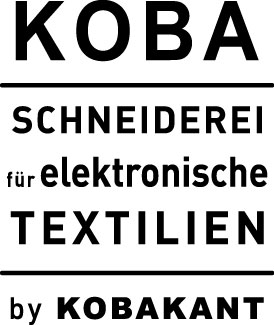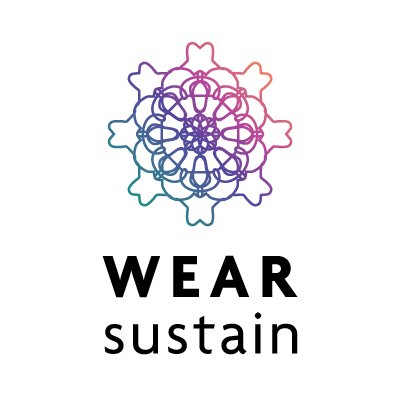Perspectives: DESIGNING LONGEVITY
from thinking to practice… and back again
Since Hannah and Mika first started focussing on longevity and what it could mean for their current and future design practice in terms of environmental sustainability, they have explored key longevity aspects (such as robustness and durability, repairability, washability, transparency, hackability and emotional attachment) through customer commissions, as well as additional experimental sampling.
What strikes me about Kobakant’s way of working is that they spend a huge amount of time thinking, talking and debating, with each other as well as others interested in the subject of more socially and environmentally friendly e-textiles and wearable technology, before they actually make anything. I would describe their approach as ‘slow design’; this does not imply they are slow for no apparent reason but I am referring to slowness in the spirit of ‘slow fashion’, a movement, which aims to offer an alternative to the accelerating speed of consumption we have been experiencing for the last decade. While specifically in the food industry this concept has grown in significance and various fashion brands have also begun to embrace this idea in the quest to create more sustainable products, it is pretty much unheard of in the electronic consumer goods industry, where built-in obsolescence seems to prevail.
The same goes for smart and electronic textiles and wearable technology, as this industry has been innovating and developing textiles and products to finally achieve commercial break-through, for decades. This desire for commercial success and mass-market adoption of textile-based wearable tech stands in stark contrast to the idea of slow making (i.e. considered crafting of products) and slow consumption (i.e. considered purchase, use, re-use and disposal), as explored by Kobakant through their Tailor Shop.
The idea of crafting smart textiles was explored by a collaborative group of academics from The Netherlands and Denmark and is documented through their paper ‘Crafting Smart textiles – a meaningful way towards societal sustainability in the fashion field?’ In their paper the group mention that ‘…creating something technologically very challenging and fancy has no value if nobody needs it’ and point out that the crafting of smart textiles includes ‘…to make things ourselves, give personalities to them and to appreciate the value created by combining time and attention – our most valuable resources.’ (Kuusk, Tomico, Langereis and Wensveen, 2012). These observations very much remind me of the way Hannah and Mika work in terms of the amount of time they spend with their customer to figure out what it is they might like to have made (Kobakant chat with potential customers over cups of tea, create an idea together, chat some more over more cups of tea and slowly the idea transforms over several visits and periods of making into a wearable piece). In addition it seems that there is a direct correlation between longevity in the making and longevity in the consumption of a product.
As I mentioned in my article on sustainability and design for durability and longevity, the focus on creating products that can be used, reused, repaired and shared is becoming an important part of developing more sustainable approaches to design, manufacture, use and disposal of products. This trend of extending the life of a product through specific design strategies first surfaced through academic, artistic or other research projects but is now becoming more prominent in an industry context. We can already find examples from brands and companies that offer repair services or instructions, the opportunity to rent products or for the consumer to be part of the creation process, in order to provide them with a more unique item they will want to wear for a longer period of time. This highlights to me that no matter how conceptual or experimental these efforts of designers, makers and artists like Hannah and Mika are perceived to be; they have the ability to inspire a wider audience including brands, companies and consumers in order to accelerate positive change in the industry. The circle does not stop there, as inspiration can flow back the other way and I would like to take a closer look at some relevant examples to see if they can inspire or challenge Kobakant’s thoughts and future practice further.
In their post, Kobakant were questioning whether consumers expect easy care and maintenance for wearable products and would be prepared to follow maintenance instructions. In response, I am thinking of two ways this could go; either maintenance has to become a rewarding and satisfying ‘experience’ for the consumer or maintenance is taken away and becomes the responsibility of the company. There is a strong trend for sharing and renting wearable products, examples range from Houdini’s technical outdoor clothing to high fashion rental items from Swedish brand Filippa K. The idea is that the customer has access to clothing at the time they want to wear it but the company takes care of any maintenance, repair and cleaning, so the product is ready for the next use.
Houdini rental outerwear
Filippa K rental fashion
Examples of creating a ‘maintenance experience’ are harder to find but I think they very much sit in line with the idea of empowering the consumer to repair products themselves. A great early example was Eugenia Morpurgo’s ‘Repair It Yourself’ shoe, which came with a repair kit to encourage slowing down consumption. Of course we have seen brands like Patagonia and Vaude tap into this trend by collaborating with iFixit, who provide easy-to-follow repair instructions for the brands’ key products.
RIY – Repair It Yourself
I would love to see Kobakant exploring the concept of creating a ‘care & repair experience’ for their customers, really testing how to best communicate with and involve the owner of one of their creations in looking after the piece and enjoying the action of doing so! I liked their idea of woven tags in the garment, so the user can find all relevant information on the KOBA website, however, as electronics and circuitry are involved this could be very tricky, not everyone is a prepared to touch electronics. Also with the personal nature of the KOBA Tailor Shop, this could be much more of an interactive experience between Kobakant and the customer, rather than just letting the customer follow instructions. It will be worth researching into and thinking about examples from other industries, product groups and cultures around the globe, where people have shown far greater interest in proper maintenance and repair of precious possessions.
Another key exploration is the problem of e-textile washability and while many research papers and projects have explored how to best protect and embed electronics so they can be washed, I am tempted to say it would be interesting to ask the question whether we need to wash product at all. So as a challenge to Kobakant this could be about ‘designing out’ washing and dry-cleaning, which could also add to the physical durability of wearable products. They have already thought about the opportunity to tap into conductive materials’ antibacterial properties and I think this is a route worth pursuing. A good starting point for finding inspiration to challenge the idea of laundry is the work of Emma Rigby, who investigated the design of garments that require less or no washing and another conceptual example is Lisa Marie Bengtsson’s ‘Bye bye laundry’. In the commercial realm innovation around stain and crease resistant finishes and coatings, which reduce the need for washing, is gathering momentum as highstreet brands have already adopted such technologies.
Energy Water Fashion, Emma Rigby
‘Bye bye laundry’ Lisa Marie Bengtsson
So, going back to the concept of slow making = slow consumption, the challenge is to not only physically extend the life of products but slowing down the life of products and the speed of consumption. This will mean involving potential customers as much as possible in the journey to make ‘slow consumption’ meaningful and engaging, through more thinking, debate and endless cups of tea…or something stronger!
Links and image references
http://www.kobakant.at/KOBA/longevity-aspects-in-practice/
http://hb.diva-portal.org/smash/record.jsf?pid=diva2%3A869634&dswid=-9164
http://www.kobakant.at/KOBA/what-is-sustainability/
Filippa K rental fashion
https://www.filippa-k.com/gb/filippak-world/lease
Houdini rental outerwear
https://www.houdinisportswear.com/en/sustainability/houdini-rental
RIY – Repair It Yourself
http://www.eumo.it/Repair-It-Yourself-2011
http://eu.patagonia.com/gb/en/worn-wear-repairs/
https://www.ifixit.com/Device/VAUDE_Bekleidungsst%C3%BCck
Energy Water Fashion, Emma Rigby
https://inhabitat.com/ecouterre/u-k-fashion-graduate-designs-clothes-that-encourage-infrequent-washing/
‘Bye bye laundry’ Lisa Marie Bengtsson
https://www.dezeen.com/2012/10/05/bye-bye-laundry-by-lisa-marie-bengtsson/





